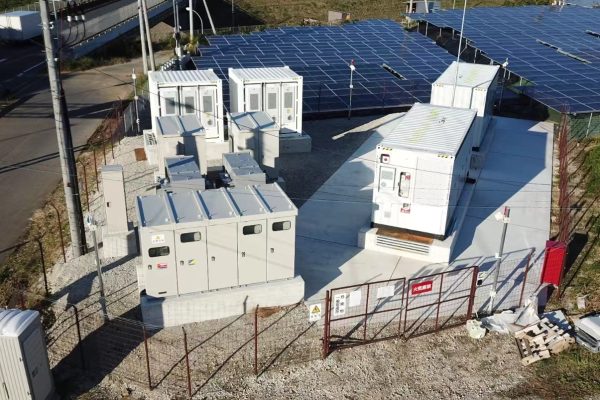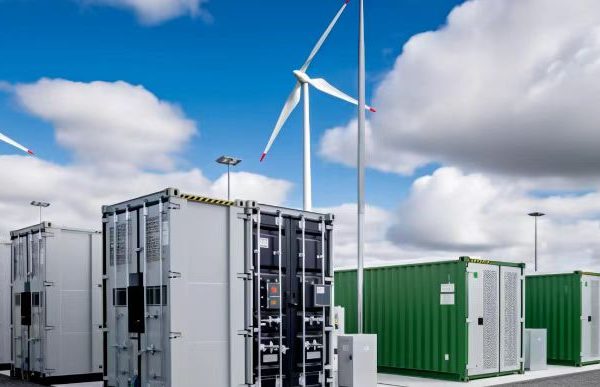An Integrated Approach for Efficient, Reliable, and Space-Saving Energy Solutions
In today’s renewable energy projects — from smart cities to remote off-grid areas — space, reliability, and efficiency are key. Project developers are now seeking integrated energy solutions that combine lighting, energy storage, and inverter systems within a single outdoor cabinet.
This “all-in-one” approach is transforming how we deploy solar energy, battery systems, and power electronics in outdoor environments. In this article, we’ll explore the design philosophy, technical advantages, application scenarios, and challenges behind this compact energy architecture.
1. What Is an Integrated Lighting + Storage + Inverter Cabinet?
An outdoor integrated energy cabinet is a modular enclosure that houses:
- Lighting controllers and fixtures (for streetlights, pathway lighting, or public spaces)
- Battery Energy Storage System (BESS) – often LiFePO₄ or LFP modules
- Solar inverter or hybrid inverter – to convert DC solar energy to usable AC power
- Monitoring and communication modules
All components are installed inside a weatherproof outdoor cabinet with optimized thermal management and safety protection.
The result: a self-contained, plug-and-play power system suitable for outdoor operation with minimal maintenance.
2. Why Combine These Functions?
✅ 2.1 Space Efficiency
Combining three systems into one cabinet significantly reduces installation footprint, ideal for urban or remote areas where space is limited.
✅ 2.2 Simplified Installation
Instead of wiring separate enclosures, everything — power conversion, lighting control, and battery management — is pre-wired and tested at the factory.
→ Result: faster commissioning and lower labor costs.
✅ 2.3 Unified Control and Monitoring
An integrated control unit communicates with the inverter, BMS, and lighting system, allowing centralized management through one software dashboard.
✅ 2.4 Improved Reliability
Factory integration ensures optimized component matching, better thermal design, and reduced wiring errors — common causes of field failures.
✅ 2.5 Lower Total Cost of Ownership
Although initial cabinet cost is higher, the overall system cost per watt-hour becomes lower when considering fewer field connections, enclosures, and maintenance trips.
3. Typical System Architecture
[ PV Input ] → [ MPPT Controller ] → [ LiFePO₄ Battery Pack ] → [ Hybrid Inverter ] → [ AC Lighting Load ]
↓
[ Smart Controller ]
↓
[ Cloud Monitoring ]
Each module communicates via RS485 / CAN / Modbus, managed by a central controller or gateway.
Key Components:
- Battery Module: 48V or 51.2V LFP cells (5–20 kWh typical)
- Hybrid Inverter: 2–10 kW power rating
- Lighting Controller: Dimming, timing, and motion-sensing features
- Cabinet: IP65-rated steel or aluminum housing, with air filters or fans
4. Technical Advantages in Outdoor Applications
⚙️ 4.1 Compact Integration
Traditional systems require separate poles, battery boxes, and inverter racks. The integrated cabinet combines all in one — saving up to 40% space.
⚙️ 4.2 Enhanced Safety
- Built-in BMS protection: overcharge, overdischarge, temperature, short-circuit
- Fireproof and water-resistant housing
- Smart monitoring to detect abnormalities early
⚙️ 4.3 Environmental Durability
Outdoor cabinets are designed for -20°C to +55°C operation, with anti-corrosion coating, sealing gaskets, and waterproof connectors.
⚙️ 4.4 Smart Management and IoT Connectivity
Modern cabinets integrate 4G/Wi-Fi/Ethernet modules for remote monitoring.
Users can track:
- State of charge (SOC)
- Power generation and lighting hours
- Temperature and fault logs
This data-driven operation improves uptime and maintenance efficiency.
⚙️ 4.5 Modular Scalability
Cabinets can be paralleled to form clustered microgrids — e.g., powering multiple poles, EV chargers, or rural installations.
5. Key Application Scenarios
🏙️ 5.1 Smart Street Lighting
Each cabinet powers multiple LED streetlights, providing nighttime illumination + renewable energy storage.
Often used in smart city projects, industrial parks, or municipal upgrades.
🏕️ 5.2 Remote or Off-Grid Villages
In remote areas, solar panels feed energy into the cabinet, which stores power for lighting, Wi-Fi, and essential loads at night.
🏫 5.3 Commercial and Industrial Compounds
For campuses or business parks, one cabinet can manage courtyard lighting + signage + small power loads.
🛠️ 5.4 Temporary or Emergency Power Sites
During construction or disaster recovery, the integrated system offers quick-deployable energy without grid connection.
⚡ 5.5 Telecom and Security Systems
Cabinets can also host backup batteries for 5G base stations, surveillance cameras, and routers — supporting hybrid functions.
6. Design Considerations
🔋 6.1 Battery Chemistry Selection
- LiFePO₄ (LFP): High safety, long cycle life (4000–6000 cycles)
- NCM/NCA: Higher energy density but less stable for outdoor heat
LFP is the dominant choice for integrated outdoor systems.
🔄 6.2 Cooling and Ventilation
Cabinets use natural convection, fans, or air filters to manage heat.
For tropical climates, active cooling or phase-change materials (PCM) may be used.
🧠 6.3 System Communication
- BMS ↔ Inverter ↔ Lighting Controller via Modbus/CAN
- Remote cloud server for fault analysis and control
🛠️ 6.4 Protection and Compliance
- IP65 waterproofing
- IEC 62619 / UN38.3 / CE / UL certification
- Surge and lightning protection
⚡ 6.5 Maintenance Access
Front-opening doors, quick connectors, and modular battery trays simplify field maintenance.
7. Economic and Logistical Benefits
| Factor | Traditional Setup | Integrated Cabinet | Improvement |
|---|---|---|---|
| Installation Time | 2–3 days | 4–6 hours | 70% faster |
| Wiring Cost | High | Minimal | Lower OPEX |
| Maintenance | Multiple points | One cabinet | Simplified |
| Transportation | Multiple crates | One module | Easier logistics |
For EPC contractors, this directly reduces project cost and deployment time, improving ROI and scalability.
8. Example: 5 kW / 10 kWh Outdoor Cabinet
- Cabinet size: 1200×800×1800 mm
- Battery: 10 kWh LFP (51.2V 200Ah)
- Inverter: 5 kW hybrid, MPPT 500V DC input
- Lighting Output: 220V AC, dimmable, time control
- Connectivity: RS485 / Wi-Fi / 4G
- Protection: IP65, RCD, surge, fireproof insulation
Deployed in industrial parks, remote schools, or solar carports — this cabinet can run 10–20 LED streetlights, power CCTV, and store renewable energy seamlessly.
9. Potential Challenges
⚠️ 9.1 Thermal Management in Hot Climates
Continuous solar charging and inverter operation raise temperatures — proper ventilation is crucial.
⚠️ 9.2 Customization Complexity
Different regions require different voltages, grid codes, and certifications, which increases production customization.
⚠️ 9.3 Cost Trade-Off
Initial investment is slightly higher than separate systems, though offset by reduced installation and service costs over time.
⚠️ 9.4 System Expansion
Upgrading battery capacity or inverter power requires careful planning due to cabinet size limitations.
10. Future Outlook
Integrated outdoor energy cabinets align perfectly with trends in:
- Distributed renewable energy
- Smart microgrids
- IoT-based infrastructure
- Sustainable city lighting
As technology advances, we expect to see:
- More AI-based monitoring (predictive maintenance)
- Modular DC bus systems for easy scalability
- Integration with EV chargers or IoT sensors
In the near future, every streetlight pole or telecom site could include its own miniature BESS + inverter + controller, making decentralized power a practical reality.
Combining lighting, energy storage, and inverter systems in one outdoor cabinet is more than an engineering choice — it represents a philosophy of efficiency, safety, and modernization.
By integrating hardware, software, and control in a single structure, energy suppliers and EPC firms can:
- Simplify deployment
- Enhance reliability
- Reduce maintenance cost
- Deliver smart, renewable-ready infrastructure
For energy storage companies, system integrators, and export-oriented manufacturers, offering such all-in-one outdoor cabinets will become a strong competitive edge in the growing renewable energy market.









